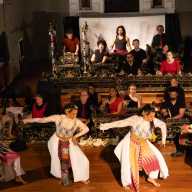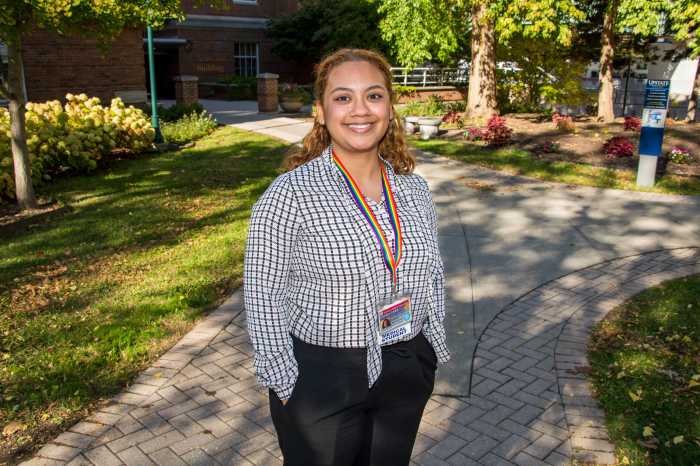By Daniel Arimborgo
It's commonly said that everyone in America is or is a descendant of immigrants, except American Indians.
At the Poppenhusen Institute in College Point, you can get an idea of what these original Americans, particularly those in what is now Queens, were like.
A model of a Matinecock Indian with long hair greets you at the door. He only wears moccasins and a leather loincloth, and holds a long stick for spearing fish. Fish fry on a grill behind him. A map made of wood shows a breakdown of Long Island by Indian tribes – Queens County was Matinecock territory. Matinecock, a plaque says, means “land of hills” – any tour of College Point will attest to that.
The Matinecocks descended from nomadic people, and were members of the Delaware Indian Nation who lived in the tri-state area, and spoke similar dialects of Alonquian. There is no written record of the language, it was only spoken. They relied on fish and plants, and hunting deer, beaver, raccoon, rabbit and other game, and were among the first tribes to encounter Europeans.
Their main villages in College Point were at Grantville and Graham Court. College Point was an ideal location for the Matinecock – surrounded by water on three sides, it allowed for plentiful fishing and had many creeks which provided fresh drinking water.
A plaque tells us that in the 1930s three major archaeological digs were done on Tallman Island, Graham Court and Grantville.
Nearby sits a small model for the framework of a wigwam, the Matinecock equivalent of a teepee. Opposite it, lies a life-sized replica of one.
A display case holds bone fragments of dogs unearthed with their owners' remains in 1956, on the former E. Platt Stratton Estate which covered the area along Flushing Bay on College Point Boulevard between 25th Road and 25th Avenue. Dogs were sacrificed in the belief they would accompany their owners to the afterlife.
A sample of natural remedies used by the Matinecock lies in another display case and includes seaweed for rheumatism; sassafras to purify the blood; white pine for coughs; white oak for acne and pains; bark of willow to treat headaches (modern analgesics are still derived from the willow bark); spider webs to stop bleeding; wild cherry for stomach upset; onions for fever and flu. The Matinecocks shared their knowledge of these remedies with European settlers.
Another display case shows tools used by the Matinecocks, including a flint knife, fire-starting bow and its bow drill. A stick would be wrapped in the bow and spun in a drilling motion in a bowled stone while an assistant would blow on kindling near the stick's flint-headed tip to ignite it.
There is a “Please Touch” table which has various parts from animals the Matinecocks would hunt. On the table are a turtle shell, deer skin, beaver skull, wild turkey feather, conch shell, rabbit skin, and mink tail.
A matching board challenges youngsters to match pictures of animals native to the area with their paw prints, by pressing two corresponding buttons simultaneously. A successful match rings a bell.
The Matinecocks' demise was largely brought about by the many diseases the Europeans brought along with them when they settled in the area.
They were a peaceful people who respected all forms of life, including human and animal. They only killed what they needed to survive, and treated the earth with respect.
The Matinecock exhibit at the Poppenhusen Institute at 114-04 14th Road in College Point, is open for viewing Mondays through Wednesdays, 11 a.m. to 4 p.m. and weekends and evenings by appointment by calling 358-0067. Group tours are available for classes and schools.
The Poppenhusen Institute can be reached by the Q65 which will take you by the institute, or the Q20A which will leave you with a seven-block walk west on 14th Road.
Reach Qguide writer Daniel Arimborgo by e-mail at timesledger@aol.com or call 229-0300 Ext. 141.




































